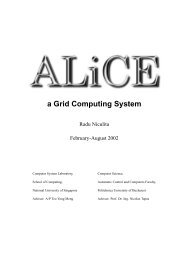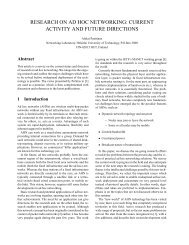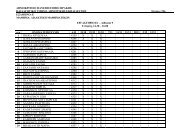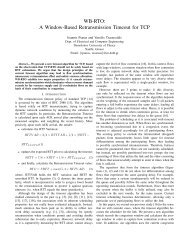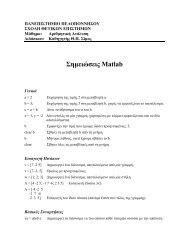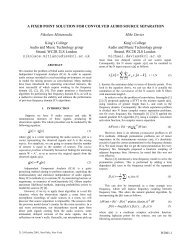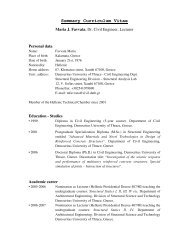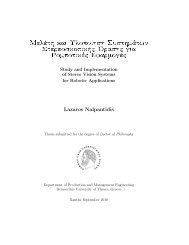Enhancement of Multiple Sensor Images using Joint Image ... - Utopia
Enhancement of Multiple Sensor Images using Joint Image ... - Utopia
Enhancement of Multiple Sensor Images using Joint Image ... - Utopia
Create successful ePaper yourself
Turn your PDF publications into a flip-book with our unique Google optimized e-Paper software.
e pursued to trace the degraded areas.<br />
The “fused” image will be employed, as it emerges from the fusion algorithm.<br />
As mentioned earlier, the fusion algorithm will attempt to merge the areas<br />
<strong>of</strong> high detail to the fused image, whereas for the areas <strong>of</strong> degraded information,<br />
i.e. areas <strong>of</strong> weak edges or texture in all input images, will not impose<br />
any preference to any <strong>of</strong> the input images and therefore the estimated fusion<br />
weights will remain approximately equal to the initial weights wi = 1/T . Consequently,<br />
the areas <strong>of</strong> out-<strong>of</strong>-focus distortion will be described by areas <strong>of</strong> low<br />
edge information in the fused image. Equivalently, some areas <strong>of</strong> very low texture<br />
or constant background also need to be excluded, since there is no benefit<br />
in restoring them. These areas can be traced, by evaluating the local standard<br />
deviation <strong>of</strong> an edge information metric in small local neighbourhoods around<br />
each pixel. The following algorithm for extracting common degraded areas is<br />
described in the following steps:<br />
(1) Extract an edge map <strong>of</strong> the fused image f, <strong>using</strong> the Laplacian kernel,<br />
i.e. ∇ 2 f(r, t).<br />
(2) Find the local standard deviations VL(r, t) for each pixel <strong>of</strong> the Laplacian<br />
edge map ∇ 2 f(r, t), <strong>using</strong> 5 × 5 local neighbourhoods.<br />
(3) Reduce the dynamic range by calculating ln(VL(r, t)).<br />
(4) Estimate VsL(r, t), by smoothing ln(VL(r, t)) <strong>using</strong> a 15×15 median filter.<br />
(5) Create the common degraded area map A(r) by thresholding VsL(r, t).<br />
The mask A(r) is set to 1, for those r that q minr(VsL(r, t)) < VsL(r, t) <<br />
pmeanr(VsL(r, t)), otherwise is set to zero.<br />
Essentially, we create an edge map, as described by the Laplacian kernel. The<br />
Laplacian kernel was chosen because it was already estimated during the fusion<br />
stage <strong>of</strong> the framework. The next step is to find the local activity in<br />
5 × 5 neighbourhoods around each pixel in the edge map. A metric <strong>of</strong> local<br />
activity is given by the local standard deviation. A pixel <strong>of</strong> high local activity<br />
should be part <strong>of</strong> an “interesting” detail in the image (edge, strong texture<br />
etc), whereas a point <strong>of</strong> low local activity might be a constant background<br />
or weak texture pixel. We can devise a heuristic thresholding scheme in order<br />
to identify these areas <strong>of</strong> weak local activity, i.e. possible degraded areas in<br />
all input images for fusion. The next step is to reduce the dynamic range <strong>of</strong><br />
these measurements, <strong>using</strong> a logarithmic nonlinear mapping, such as ln(·). To<br />
smooth out isolated pixels and connect similar areas, we perform median filtering<br />
<strong>of</strong> the log-variance map. Consequently, the common degraded area map<br />
is created by thresholding the values <strong>of</strong> the log-variance map with a heuristic<br />
threshold set to q minr(VsL(r, t)) < VsL(r, t) < pmeanr(VsL(r, t)), where p, q<br />
are constants. The aim is to avoid high quality edge/texture and constant<br />
background information. The level <strong>of</strong> detail along with the level <strong>of</strong> constant<br />
background differ for different images. In order to identify the common degraded<br />
area with accuracy, the parameters p, q need to be defined manually for<br />
14



